Are you someone who finds intrigue in the mysterious, the dramatic, and the stately? If yes, then the Gothic Revival Interior Design Style might be right up your alley! A style that emerged in the 18th century, it continues to captivate people with its dark and ornate beauty. In this article, we’ll explore the history of the Gothic Revival Interior Design Style, its key elements, and how you can incorporate it into your own home. So, buckle up and get ready to be transported into a world of medieval splendor!

Table of Contents
History of Gothic Revival Interior Design Style
The Gothic Revival Interior Design Style can trace its origins back to the mid-18th century in Europe, specifically in England. It began as a reaction to the highly ornate and elaborate Rococo and Neoclassical styles that were popular at the time. Inspired by the Gothic architecture of the medieval period, this style sought to revive the grandeur and mystique associated with the Gothic era. It gained momentum in the 19th century, with architects and designers like Augustus Pugin and John Ruskin championing the cause. The style quickly spread to other parts of Europe and the United States, where it left a lasting impression on architectural and interior design trends.
What are the key elements of Gothic Revival?
The Gothic Revival Interior Design Style is characterized by its use of rich materials, intricate patterns, and dramatic color schemes. Some of its key elements include:
Pointed arches
A hallmark of Gothic architecture, pointed arches are often used in doorways, windows, and furniture in Gothic Revival interiors. They lend an air of grandeur and elegance to any space they inhabit.
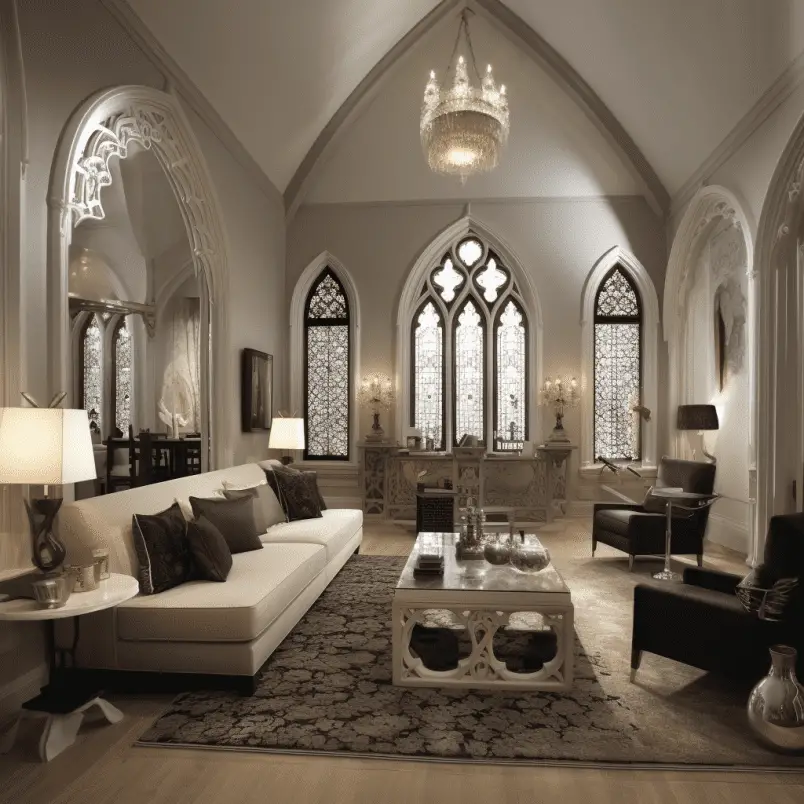
Vaulted ceilings
Vaulted ceilings create a sense of height and openness, allowing for the play of light and shadow, which is integral to the Gothic Revival aesthetic. These high ceilings are often adorned with ornate moldings or tracery patterns.
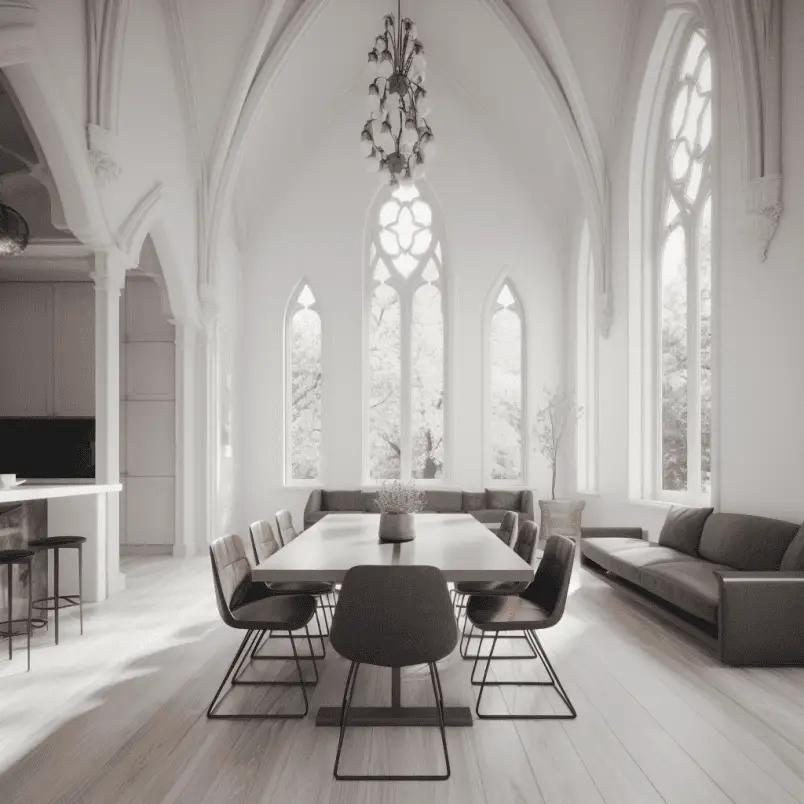
Dark and rich colors
Gothic Revival interiors typically feature deep, rich colors like red, purple, navy blue, and emerald green. These colors evoke a sense of opulence and drama, setting the stage for the overall design scheme.
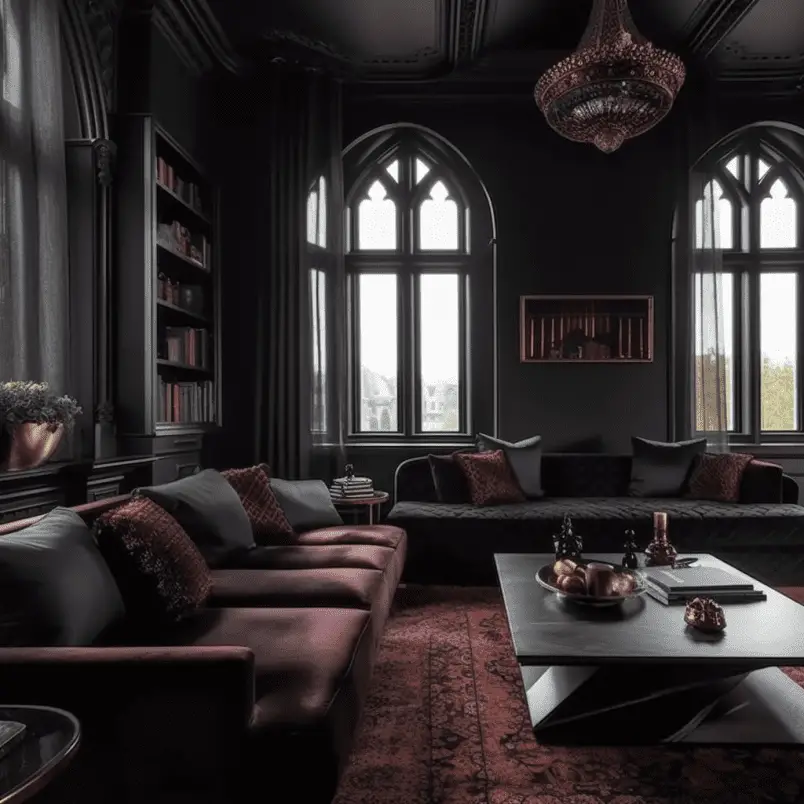
Elaborate patterns
Intricate patterns, such as damask or brocade, are common in Gothic Revival interiors. These patterns can be found in wallpapers, fabrics, and even floor tiles, adding a layer of sophistication and visual interest to the space.
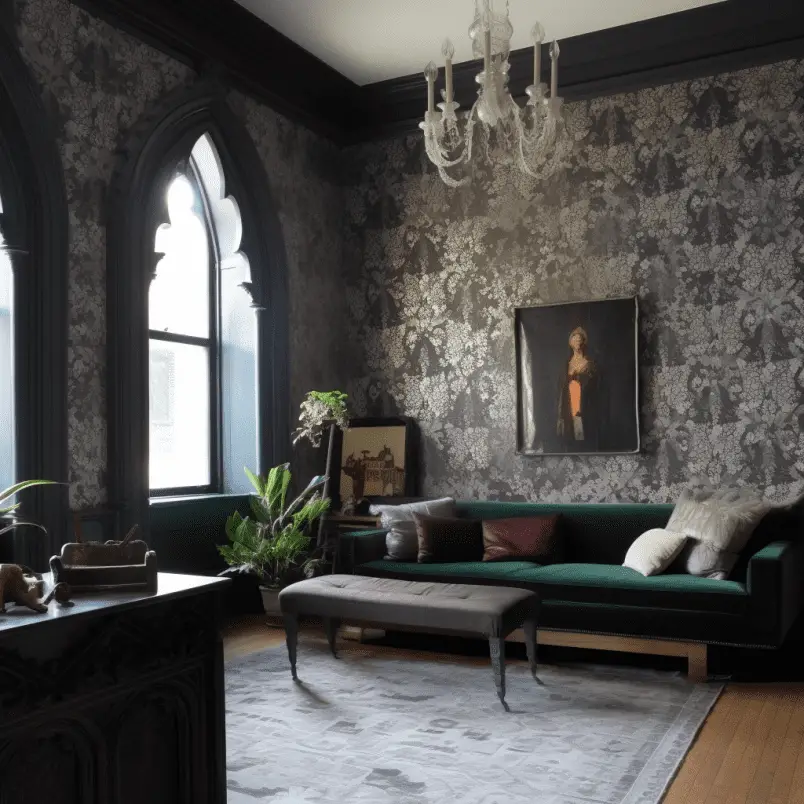
Heavy, luxurious fabrics
Velvet, silk, and heavy brocades are popular fabric choices in Gothic Revival design. These fabrics not only add texture and warmth to a room, but they also contribute to the overall sense of grandeur and opulence.
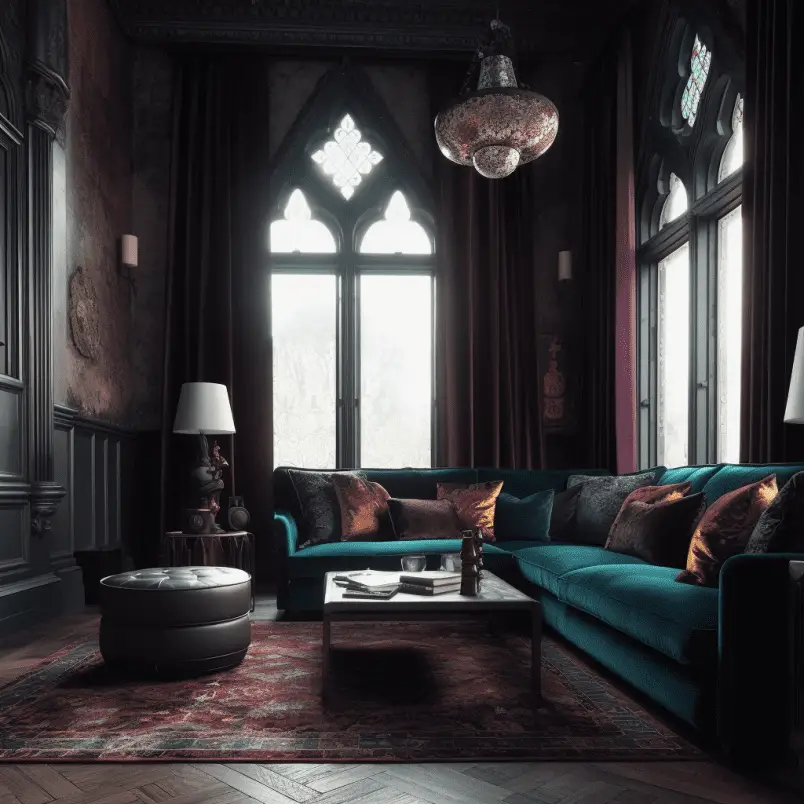
How to achieve the Gothic Revival Iook in your home
If you’re looking to introduce some Gothic Revival flair into your home, here are some tips to help you get started:
- Start with a statement piece: Choose a focal point for your room, such as a grand fireplace, an elaborate chandelier, or a dramatic piece of furniture. This will set the tone for the rest of your design.
- Incorporate Gothic motifs: Use Gothic-inspired elements like pointed arches, gargoyles, and tracery patterns in your décor to add that unmistakable Gothic touch to your space.
- Choose rich colors: Opt for a dark and rich color palette that includes jewel tones like deep red, emerald green, or royal blue. You can also use accents of gold or silver to add a touch of elegance and luxury.
- Emphasize texture: Layer your space with sumptuous fabrics like velvet, silk, and heavy brocade. Consider adding ornate rugs or tapestries to walls for an extra layer of depth and texture.
- Accessorize thoughtfully: Add Gothic-inspired decorative accents such as candelabras, ironwork, or antique mirrors to complete the look. These pieces will help to bring cohesion to your Gothic Revival-inspired space.
Gothic Revival Interior Design in different rooms
While the Gothic Revival style may seem a bit overwhelming for some, it can be easily adapted to suit different rooms in your home:
Living room
Create a dramatic focal point with a grand fireplace or a striking chandelier. Add heavy, luxurious drapery and plush velvet seating to provide comfort and an air of sophistication.
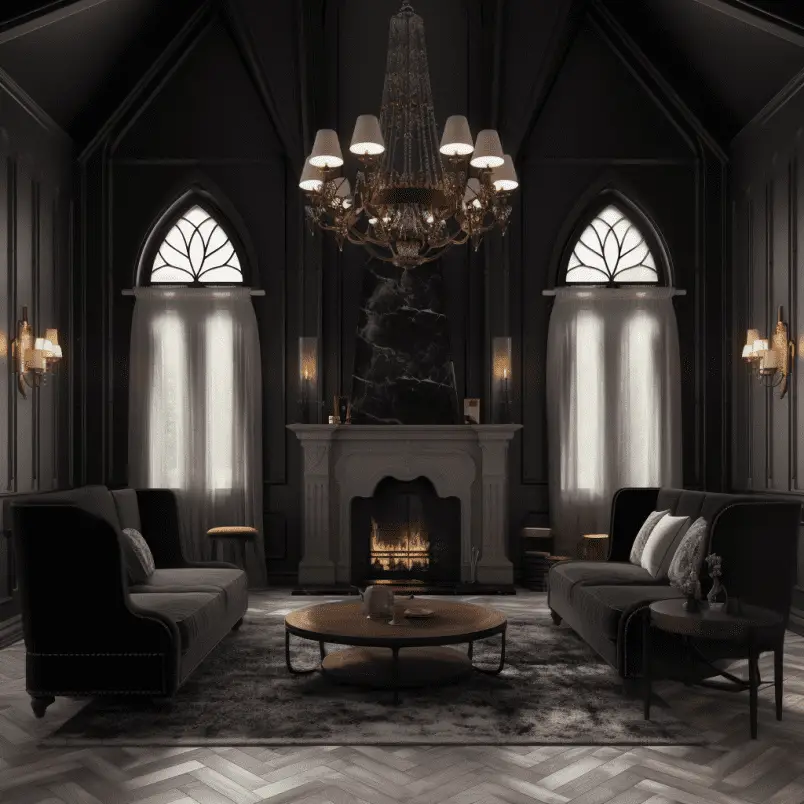
Dining room
Opt for a long, dark wooden table with ornate carvings and high-backed chairs to set the stage for an opulent dining experience. Use richly patterned table linens and ornate tableware to enhance the ambiance.

Bedroom
Choose an elaborate four-poster bed with intricately carved details to create a striking centerpiece. Use heavy, luxurious bedding and plush pillows in rich colors to create a sense of warmth and romance. Add a touch of mystery with antique mirrors and candelabras as decorative accents.
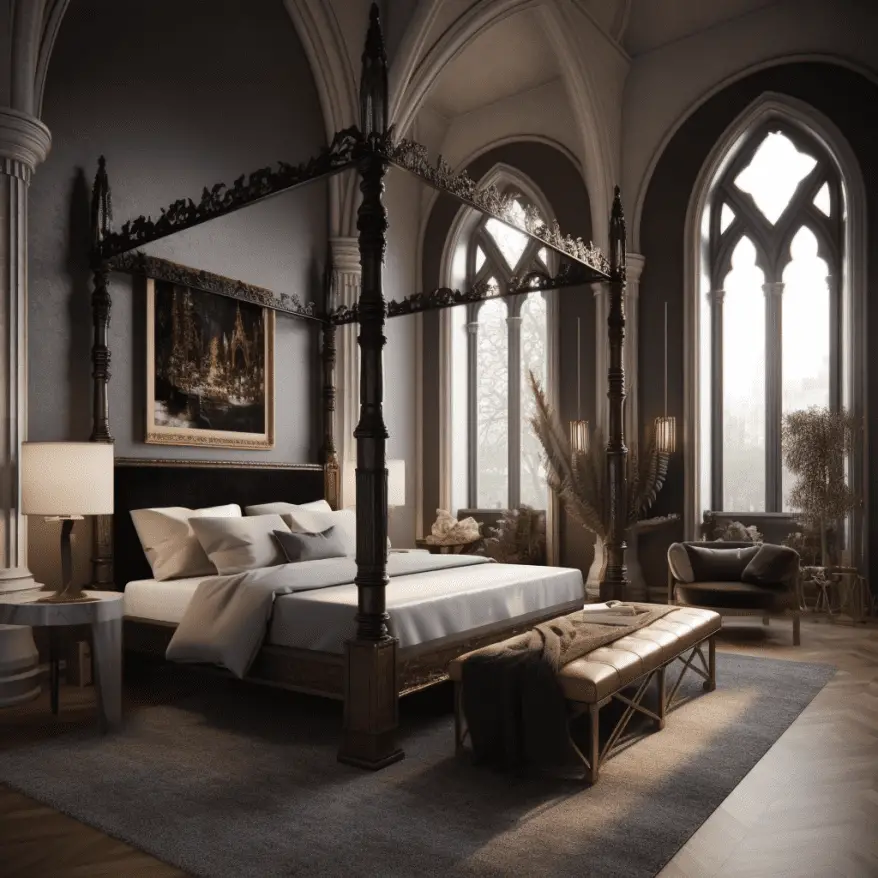
Bathroom
Incorporate elements like a claw-foot tub or a Gothic-inspired vanity to evoke the style. Use ornate tiles with intricate patterns to add visual interest, and consider a chandelier or wall sconces for a touch of glamour.
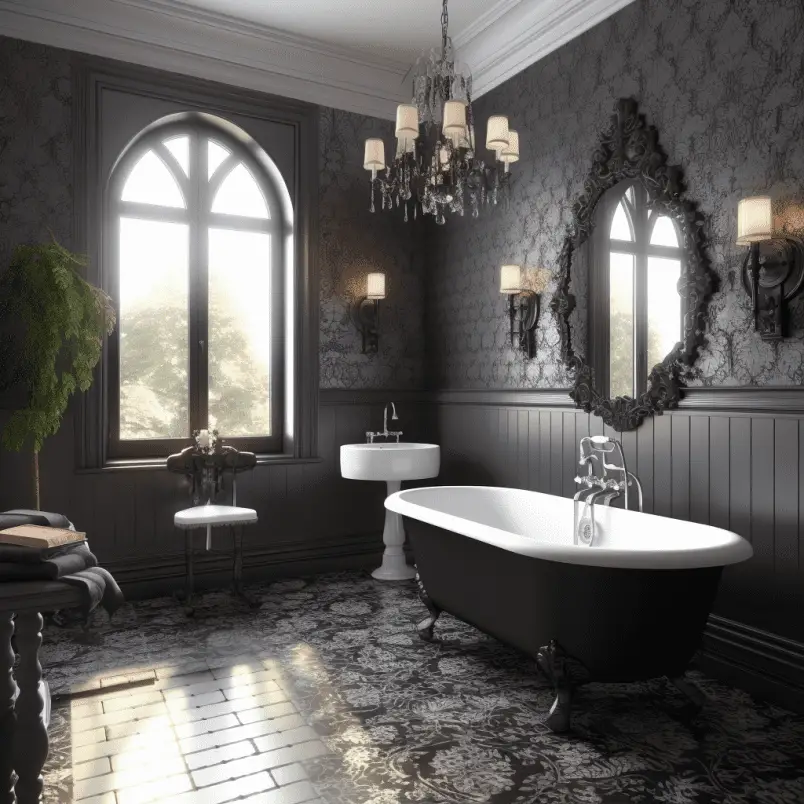
Pros and cons of Gothic Revival Interior Design
Like any design style, Gothic Revival has its pros and cons:
Pros:
- Unique and dramatic: The Gothic Revival style adds a sense of drama and grandeur to any space, making it stand out from more conventional designs.
- Rich in history: The style has a rich and storied past, making it an excellent choice for those who appreciate history and tradition.
- Timeless appeal: The Gothic Revival aesthetic has withstood the test of time, retaining its appeal for centuries.
Cons:
- Can feel overwhelming: The rich colors, intricate patterns, and ornate details may feel overpowering for some people, particularly in smaller spaces.
- High maintenance: The heavy fabrics and elaborate furnishings may require more upkeep than more minimalist designs.
- Cost: Due to the use of luxurious materials and intricate craftsmanship, Gothic Revival décor can be more expensive than other design styles.
Conclusion
The Gothic Revival Interior Design Style is a captivating and dramatic choice for those who appreciate history and grandeur. By incorporating its key elements like pointed arches, vaulted ceilings, dark and rich colors, elaborate patterns, and heavy fabrics, you can create a space that feels both opulent and timeless. While it may not be for everyone, this design style offers a unique and intriguing alternative for those seeking something different from conventional interior design trends. With thoughtful application, the Gothic Revival style can be adapted to suit various rooms in your home, creating a cohesive and enchanting living space.
FAQ
What is the origin of the Gothic Revival Interior Design Style?
The Gothic Revival Interior Design Style originated in the mid-18th century in England as a reaction to the Rococo and Neoclassical styles. It aimed to revive the grandeur and mystique associated with the Gothic era.
What are some key elements of the Gothic Revival Interior Design Style?
Key elements include pointed arches, vaulted ceilings, dark and rich colors, elaborate patterns, and heavy, luxurious fabrics.
How can I incorporate Gothic Revival design into my home?
Start with a statement piece, incorporate Gothic motifs, choose rich colors, emphasize texture, and accessorize thoughtfully to create a Gothic Revival-inspired space.
Is Gothic Revival design suitable for all types of rooms?
Yes, with careful planning and thoughtful application, Gothic Revival design can be adapted to suit various rooms, including living rooms, dining rooms, bedrooms, and bathrooms.
What are some pros and cons of the Gothic Revival Interior Design Style?
Pros include its unique and dramatic aesthetic, rich historical roots, and timeless appeal. Cons can be its potential for feeling overwhelming in smaller spaces, the higher maintenance required due to heavy fabrics and elaborate furnishings, and the potentially higher cost of incorporating luxurious materials and intricate craftsmanship.

